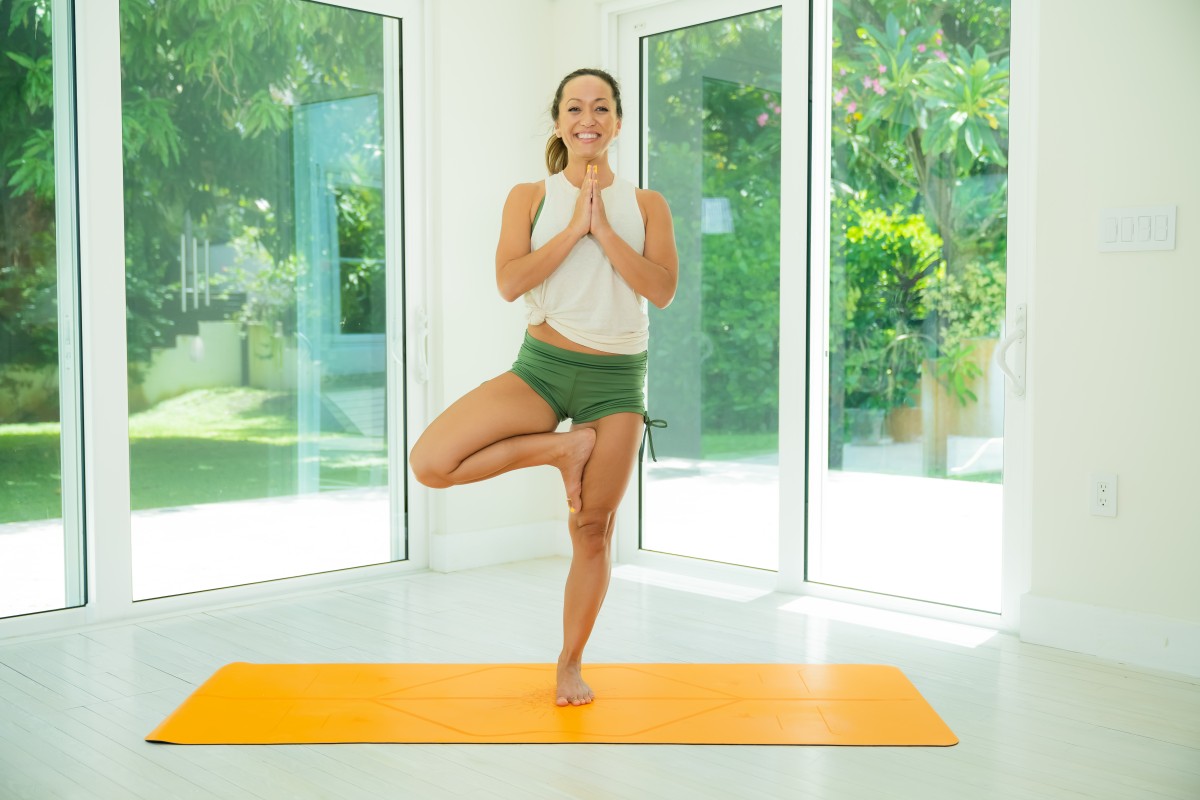Yoga Is Challenge Day 4- Balance
Falling is the best way to learn balance. No one likes to hear that. We would all prefer if we could just decide to be in balance, whether physically, mentally or emotionally, and have it just be so. The reality of life is far from that. Well, I should say that there are people with naturally good balance, but even these blessed individuals need to practice applying their skills to reach an ideal state for balance.
Physical balance stems from the ability of your body to sense where it is in the space around your body. Called proprioception, this physical sense-ability must be learned. Most adult human beings have a decently developed neuromuscular system that is able to send enough biofeedback along the inner circuitry to maintain homeostasis in average situations. That fancy scientific sentence simply means that most people can walk, hop, jump, and lightly run without losing their balance. What the majority of us don’t remember in our adult state is all the time we fell and toppled over while we as children were learning the skills of walking, jumping, running and generally standing on two feet. Along the process of learning to walk and stand we have all fallen countless times. We’ve hit our heads, bumped our bums, scratched our foreheads and all other sorts of small disasters. These falls were all part of the way the body learns to perceive its limitations and boundaries. These small failures are essential components of the learning process of embodiment, without which, the body would be stifled of its normal developmental stages.
Yoga demands more from the body than the average use. Yoga asks you to balance while standing on one leg, while twisting, while balancing on your head and all other sorts of twisted, contorted poses. Just as in learning to walk, the body has to test its own limits in learning balance. In other words, you have to be willing to fall.
There are certain poses in yoga that are called “Balancing Poses” because their aim is to teach the body an entirely new level of proprioception. Most of these poses involve standing on one leg and attempting to do something strange with the rest of the body. Whether bending the non-standing leg upwards into a half-lotus, extending the leg back in extension, or lifting the leg up and rotating it to the side, the balancing poses are certain to achieve one thing in the beginning of every yoga student’s journey—you are certain to fall! My suggestion is to embrace it as part of the learning process. Understand what’s happening in the deep center of the body where balance is a living, breathing felt experience and then you’ll have more confidence (and perhaps more forgiveness and humor) about the practice.
Your pelvis contains your center of gravity. When you move your pelvis your entire body must follow. Moving the pelvis by even small increments while you’re standing on one leg can feel like seismic shifts that disturb your foundation. Balance is best achieved when your center of gravity is distributed most efficiently along the center line of the body, with as minimal misalignments as possible. In other words, if you’re standing in a Tree Pose, with one leg straight and the other leg bent, balance will be easier if your butt isn’t sticking out and your chest isn’t hunched forward because those two movements destabilize the center-line orientation that is ideal for physical balance. You may read these words and agree with me intellectually. But, yoga is always about embodied knowledge. It only rings absolutely true for you when you directly experience it to be true. Today in your practice, my suggestion is for you to actively feel where your center of gravity is while you are practicing the Balancing Poses and perhaps all the poses. Feeling the subtleties of weight distribution will be a valuable teacher and help you cultivate a deeper mind-body connection.
One lesson that I’ve learned over the many times I’ve lost my balance in the practice is that balance is first and foremost a state of mind. If you lose your mental balance while attempting to achieve a physical pose, then even if you manage to bend the body to your will, the essence of yoga is lost. So, with absolute confidence that you will one day balance, enjoy the process of falling out of the poses. Let your body learn the proprioception that it needs and can only truly learn from directly experiencing imbalance. Practice the mental and emotional balance to face what appears as failure with a happy attitude of faith. Do not try and force balance into being or else you will already be out of balance. Do not give in to self-pity, self-hatred or other negative thought patterns when you fall, or else you will already be out of balance. Instead, practice the physical poses with awareness of the natural process it takes to find balance. Understand that the inner work that you learn about how to keep the mind calm, compassionate, forgiving and faithful is the deeper lesson about balance. It’s easy to love yourself when everything goes your way, but if you can love yourself even as you’re falling colossally out of a pose, then you’re a mater of yoga.
Practice along with my 30-day Yoga Challenge on Omstars
Watch my Live Replay on YouTube


